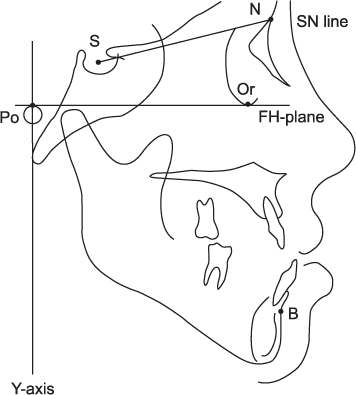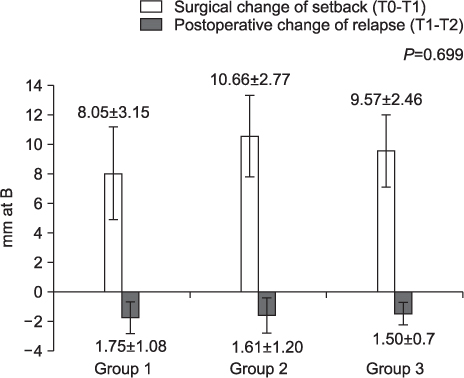1. Proffit WR, Fields HW Jr, Moray LJ. Prevalence of malocclusion and orthodontic treatment need in the United States: estimates from the NHANES III survey. Int J Adult Orthodon Orthognath Surg. 1998; 13:97–106.
2. Lee SJ, Suhr CH. Recognition of malocclusion and orthodontic treatment need of 7~18 year-old korean adolescent. Korean J Orthod. 1994; 24:367–394.
3. Yoo YK, Kim NI, Lee HK. A study on the prevalence of malocclusion in 2,378 Yonsei University students. Korean J Orthod. 1971; 2:35–40.
4. Choi BH, Min YS, Yi CK, Lee WY. A comparison of the stability of miniplate with bicortical screw fixation after sagittal split setback. Oral Surg Oral Med Oral Pathol Oral Radiol Endod. 2000; 90:416–419.

5. Harada K, Enomoto S. Stability after surgical correction of mandibular prognathism using the sagittal split ramus osteotomy and fixation with poly-L-lactic acid (PLLA) screws. J Oral Maxillofac Surg. 1997; 55:464–468.

6. Ayoub AF, Millett DT, Hasan S. Evaluation of skeletal stability following surgical correction of mandibular prognathism. Br J Oral Maxillofac Surg. 2000; 38:305–311.

7. Kim CH, Lee JH, Cho JY, Lee JH, Kim KW. Skeletal stability after simultaneous mandibular angle resection and sagittal split ramus osteotomy for correction of mandible prognathism. J Oral Maxillofac Surg. 2007; 65:192–197.

8. Kim MJ, Kim SG, Park YW. Positional stability following intentional posterior ostectomy of the distal segment in bilateral sagittal split ramus osteotomy for correction of mandibular prognathism. J Craniomaxillofac Surg. 2002; 30:35–40.

9. Choi BH, Zhu SJ, Han SG, Huh JY, Kim BY, Jung JH. The need for intermaxillary fixation in sagittal split osteotomy setbacks with bicortical screw fixation. Oral Surg Oral Med Oral Pathol Oral Radiol Endod. 2005; 100:292–295.

10. Joss CU, Thüer UW. Stability of hard tissue profile after mandibular setback in sagittal split osteotomies: a longitudinal and long-term follow-up study. Eur J Orthod. 2008; 30:352–358.

11. Mobarak KA, Krogstad O, Espeland L, Lyberg T. Long-term stability of mandibular setback surgery: a follow-up of 80 bilateral sagittal split osteotomy patients. Int J Adult Orthodon Orthognath Surg. 2000; 15:83–95.
12. Schatz JP, Tsimas P. Cephalometric evaluation of surgical-orthodontic treatment of skeletal Class III malocclusion. Int J Adult Orthodon Orthognath Surg. 1995; 10:173–180.
13. Wolford LM, Schendel SA, Epker BN. Surgical-orthodontic correction of mandibular deficiency in growing children (long term treatment results). J Maxillofac Surg. 1979; 7:61–72.
14. Huang CS, Ross RB. Surgical advancement of the retrognathic mandible in growing children. Am J Orthod. 1982; 82:89–103.

15. Schendel SA, Wolford LM, Epker BN. Mandibular deficiency syndrome. III. Surgical advancement of the deficient mandible in growing children: treatment results in twelve patients. Oral Surg Oral Med Oral Pathol. 1978; 45:364–377.

16. Lewis AB, Roche AF. Late growth changes in the craniofacial skeleton. Angle Orthod. 1988; 58:127–135.
17. Miloro M, Ghali GE, Larsen PE, Waite P. In: Peterson's principles of oral and maxillofacial surgery. 2nd ed. Hamilton, London: BC Decker; 2004. pp. 6-7.
18. Trauner R, Obwegeser H. Zur operations technik bei der progenie und anderen unterkieferanomalien. Dtsch Zahn Mund-und Kieferheilk. 1955; 23:1–26.
19. Trauner R, Obwegeser H. The surgical correction of mandibular prognathism and retrognathisa with consideration of genioplasty. I. Surgical procedures to correct mandibular prognathism and reshaping of the chin. Oral Surg Oral Med Oral Pathol. 1957; 10:677–689.
20. Spiessl B. In: Osteosynthese bei sagittaler osteotomie nach Obwegeser/Dal Pont. Stuttgart: Fortschritte der Kiefer-und Gesichtschirurgie; 1974.
21. Ochs MW. Bicortical screw stabilization of sagittal split osteotomies. J Oral Maxillofac Surg. 2003; 61:1477–1484.

22. Stroster TG, Pangrazio-Kulbersh V. Assessment of condylar position following bilateral sagittal split ramus osteotomy with wire fixation or rigid fixation. Int J Adult Orthodon Orthognath Surg. 1994; 9:55–63.
23. Ueki K, Nakagawa K, Marukawa K, Takazakura D, Shimada M, Takatsuka S, et al. Changes in condylar long axis and skeletal stability after bilateral sagittal split ramus osteotomy with poly-L-lactic acid or titanium plate fixation. Int J Oral Maxillofac Surg. 2005; 34:627–634.

24. Raveh J, Vuillemin T, Lädrach K, Sutter F. New techniques for reproduction of the condyle relation and reduction of complications after sagittal ramus split osteotomy of the mandible. J Oral Maxillofac Surg. 1988; 46:751–757.





 PDF
PDF ePub
ePub Citation
Citation Print
Print





 XML Download
XML Download